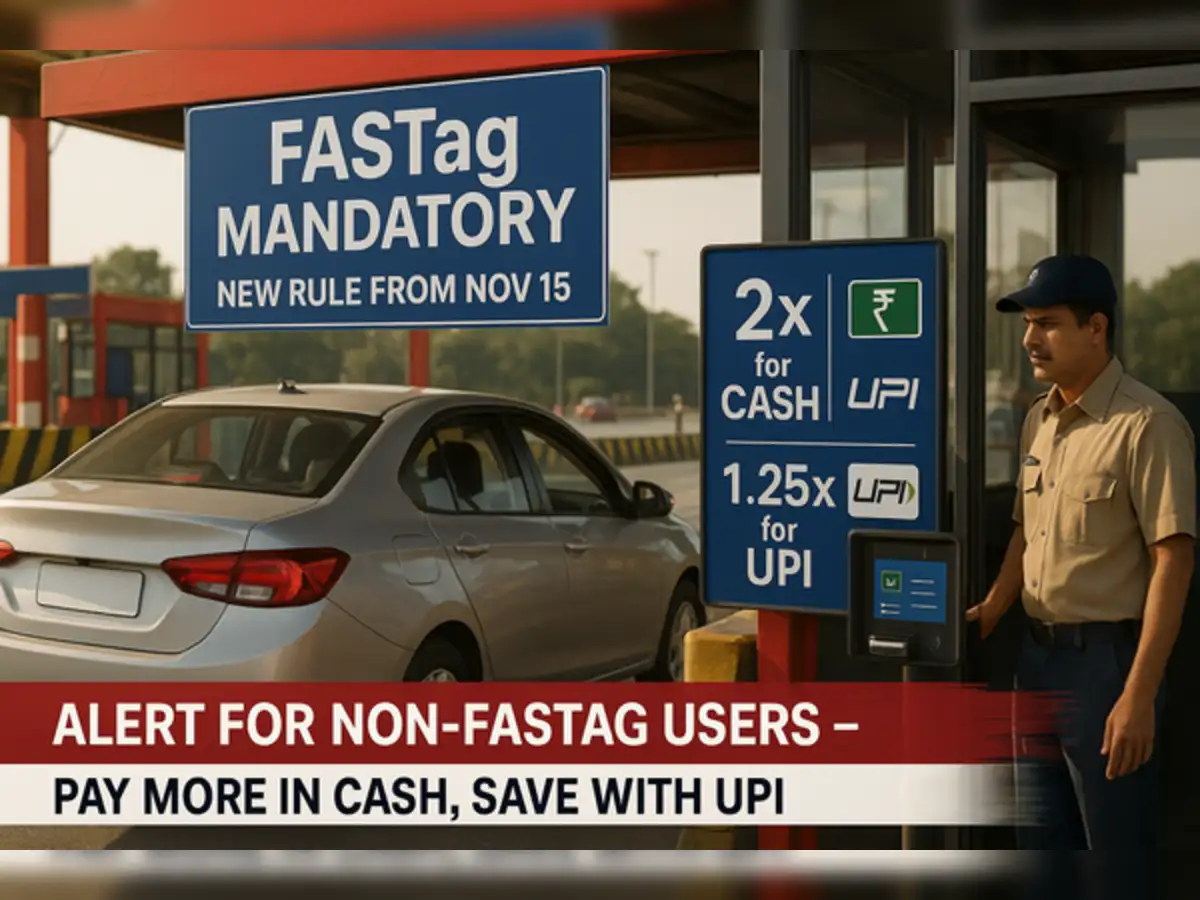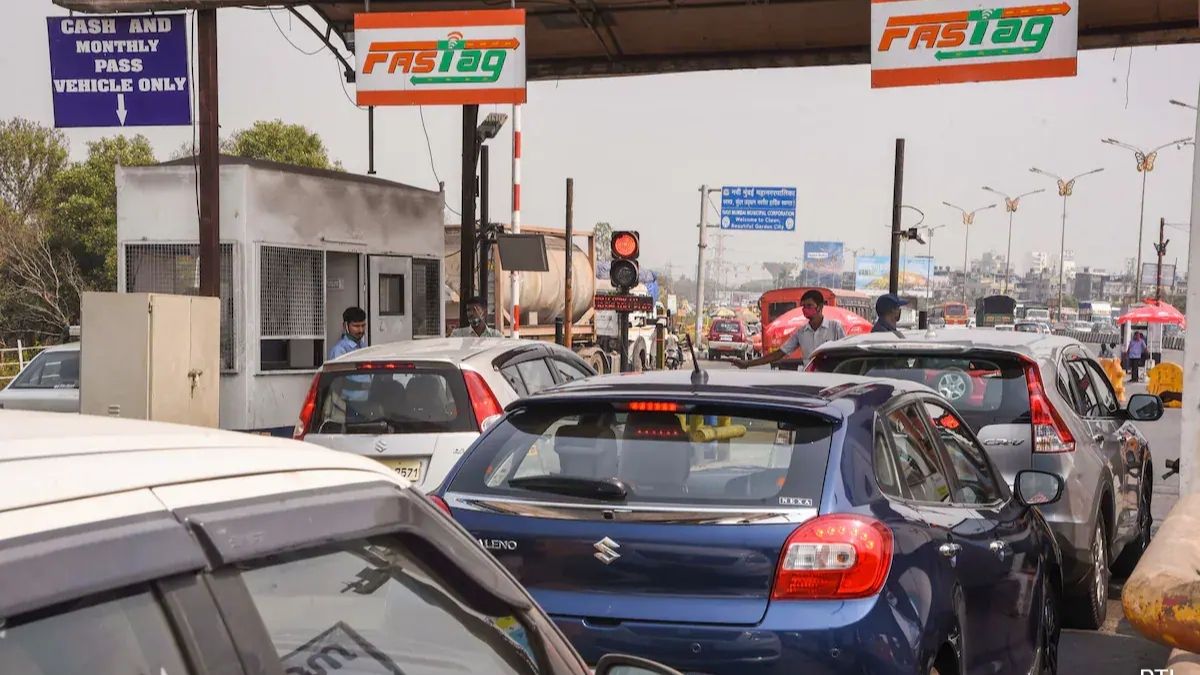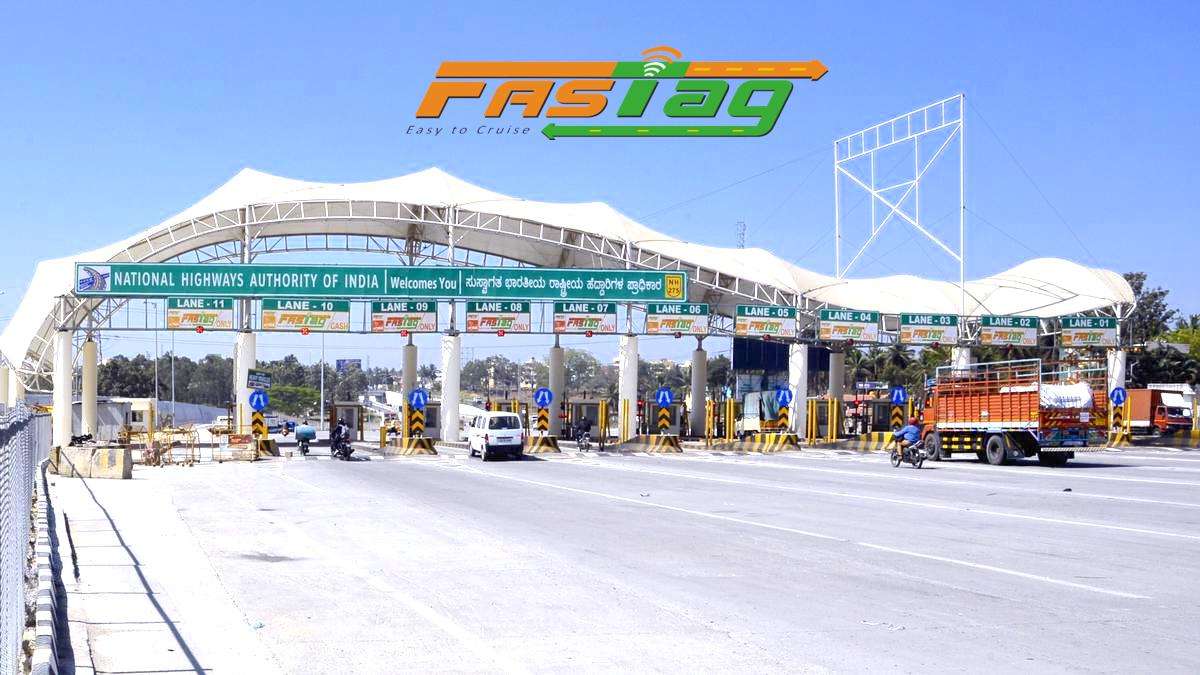From November 15, the government is making it easier — and cheaper — for travellers who forget their FASTag or have an invalid one while crossing toll plazas. The Ministry of Road Transport and Highways has announced a major change in the National Highways Fee Rules that will allow commuters to pay tolls through the Unified Payments Interface (UPI) at a reduced penalty rate instead of paying double the toll amount in cash.

Government Push for Digital Toll Payments
The Ministry stated that this move is aimed at promoting digital payments and reducing cash transactions across toll booths in the country. The FASTag system, which was introduced to digitise toll payments and reduce highway queues, had become mandatory for all vehicles. Those who failed to comply were charged twice the toll amount as a penalty when paying in cash.
However, the government has now decided to incentivise digital behaviour rather than penalise it harshly. According to the new rule, commuters who pay via UPI will only be charged 1.25 times the normal toll rate, compared to double the amount if they pay in cash.
For instance, if the normal toll fee is ₹100, those paying in cash without a valid FASTag will be charged ₹200, while those using UPI will pay just ₹125.
New Rule Takes Effect from November 15
The revised rules, which amend the National Highways Fee (Determination of Rates and Collection) Rules, 2008, will officially come into effect from November 15, 2025. The government emphasised that the change reflects its ongoing efforts to make toll payments smoother, more transparent, and technologically efficient.
The ministry’s statement highlighted that digital payments not only save time but also reduce traffic congestion at toll plazas and improve the commuting experience. By promoting UPI payments, the government expects faster processing and fewer cash transactions, leading to shorter queues and greater convenience for highway users.

Why the Change Matters
The move comes as part of India’s broader strategy to strengthen its digital payment ecosystem and enhance road transport efficiency. With the rapid adoption of UPI across retail and public sectors, the government aims to integrate the same convenience into its toll payment systems.
Officials explained that the change will make life easier for drivers who may forget their FASTag or face technical glitches, ensuring that small mistakes do not result in steep fines. The measure is expected to further strengthen the digital infrastructure on highways, paving the way for a more seamless travel experience.
FASTag Remains the Preferred Mode
While the new UPI option provides a safety net for drivers, the government continues to encourage the use of FASTag as the most efficient and preferred mode of toll payment. FASTag users enjoy fully automated transactions and quicker passage through toll gates without manual intervention.
The ministry also noted that this policy revision will enhance transparency in toll collection and reduce potential revenue leakages. Moreover, the integration of digital systems like FASTag and UPI supports India’s vision of a fully digital transport infrastructure.

The Bigger Picture
This move is part of a series of reforms under the government’s NextGen Digital Transport Mission, which seeks to modernise India’s highways through smart technology and faster payment systems. By lowering penalties for UPI users, the ministry hopes to accelerate the adoption of cashless toll payments nationwide.
Highway commuters can look forward to a smoother, faster, and more affordable experience at toll plazas — and a significant step towards India’s goal of becoming a fully digital economy.
For more updates on financial policies, digital reforms, and transport developments, follow You Finance on Instagram and Facebook.















